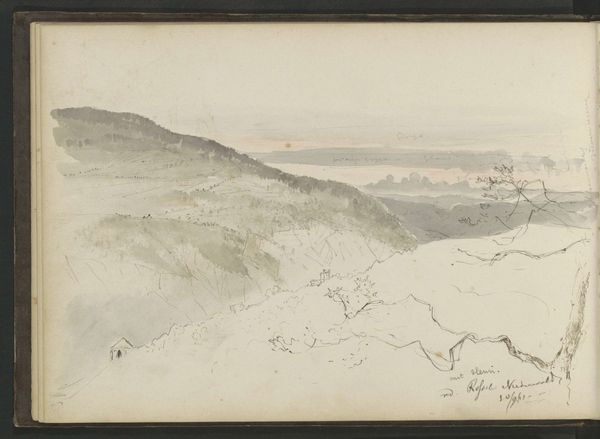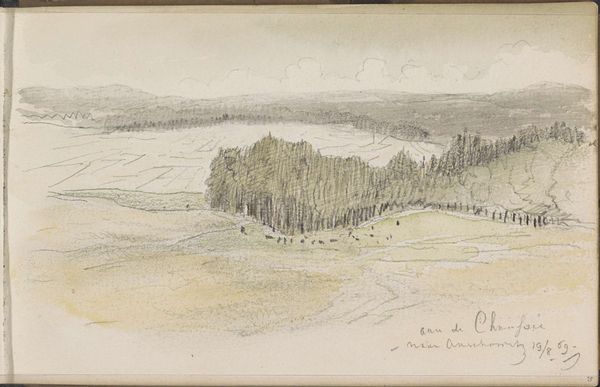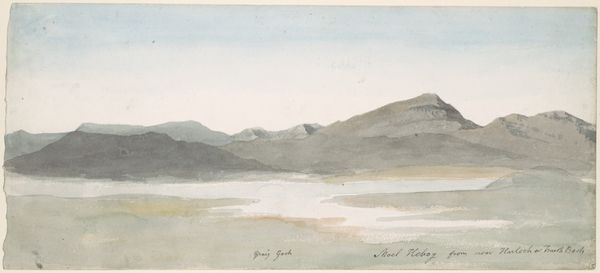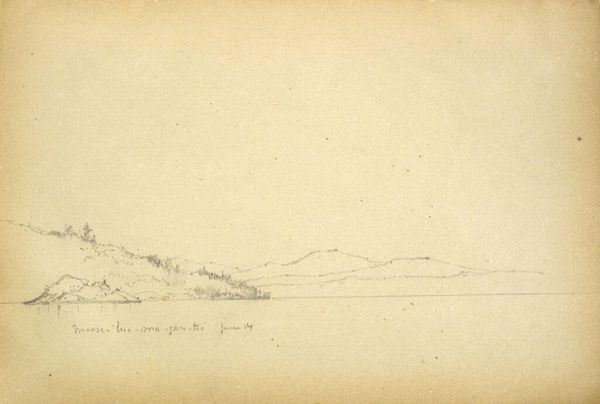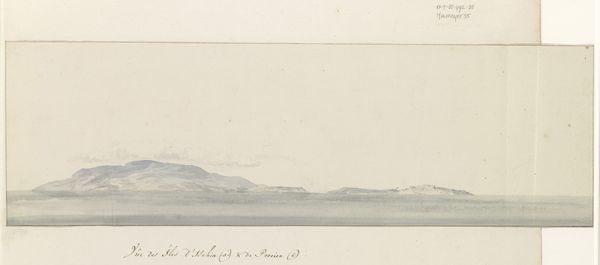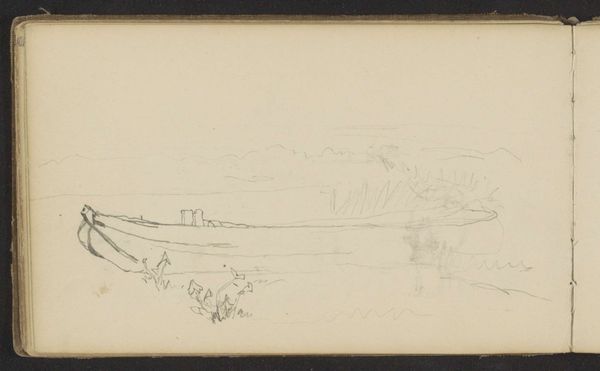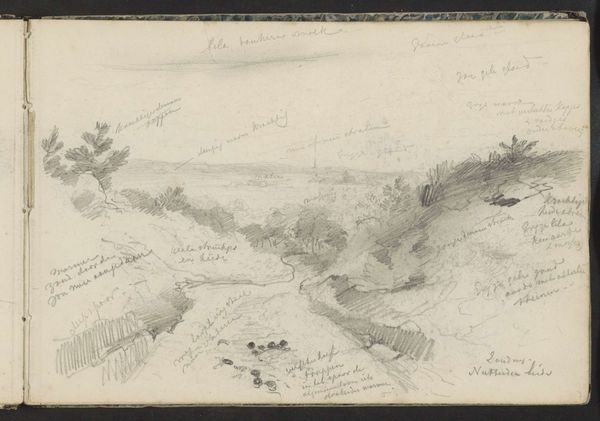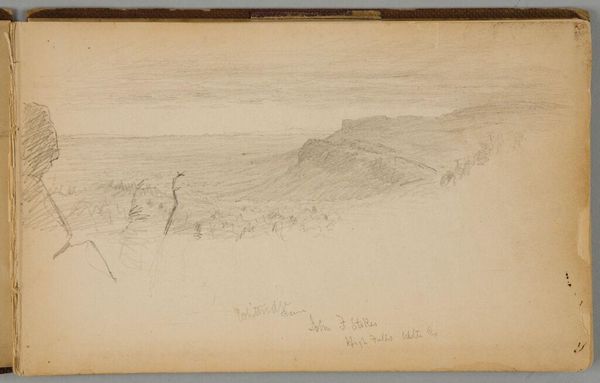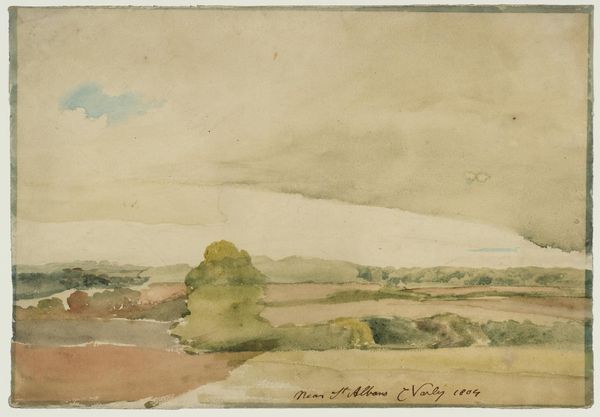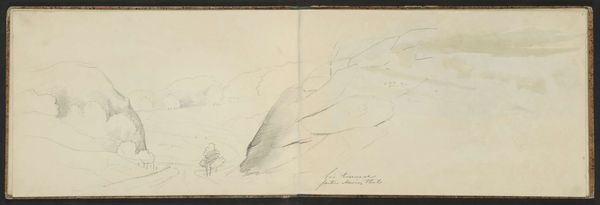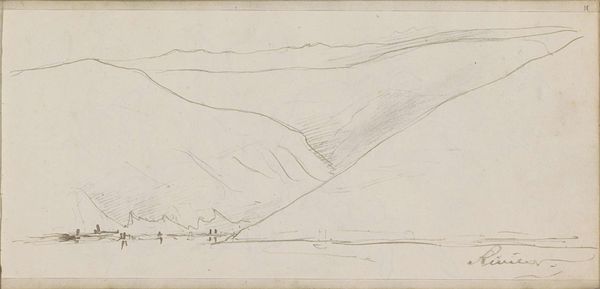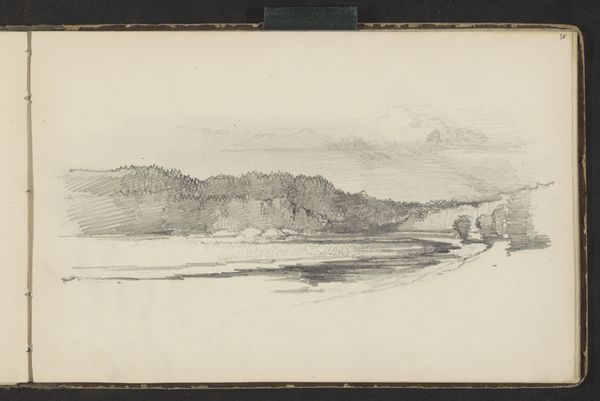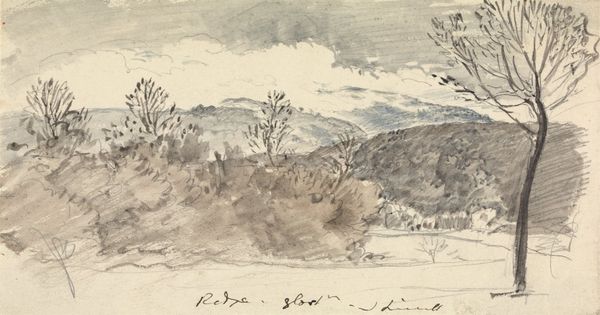
Copyright: Rijks Museum: Open Domain
Curator: Let's turn our attention to this work, "Berglandschap met heide in Niederwald" or "Mountain Landscape with Heather in Niederwald," created by Johannes Tavenraat between 1861 and 1869. It’s a watercolor piece housed here at the Rijksmuseum. Editor: Immediately striking is its delicate, almost ephemeral quality. The limited palette, primarily greys and browns, lends a tranquil, muted feel, a sense of hushed reverence for nature. Curator: The landscape, painted en plein-air, embodies key aspects of Romanticism. Mountains have historically served as potent symbols in many cultures; places where heaven and earth seem to meet. Think of the solitary figures often found in Romantic landscape paintings contemplating the sublime power of the natural world. Editor: Indeed. The way the mountain fades into the misty background contributes significantly to that sense of awe. Note also how the composition directs the eye; from the darker foreground toward the lighter, more ethereal peaks in the distance. It creates depth, pulling you into the scene. Curator: Absolutely. The heath, suggested by sparse, earthy tones, likely carried associations with both freedom and perhaps a certain melancholy, for the largely agrarian society of the Netherlands. Heathlands often evoke feelings of being on the periphery of civilization, a liminal space. Editor: Observe the textural variation despite the limitations of watercolor. Tavenraat uses subtle washes to suggest the vastness of the sky, in contrast with slightly more defined brushstrokes for the foliage, which anchors the scene. Curator: I'm fascinated by the inscriptions along the bottom margin. Written observations serve to connect a place and time. Notes alongside this evocative watercolor sketching. They function as an intimate echo of the past. Editor: And on close viewing, the overall layout suggests a window onto a vista. Perhaps our vantage point reflects on landscape traditions, filtered through Tavenraat's careful composition. A meditation on both seeing and feeling. Curator: The work leaves me pondering the ongoing relationship between humans and the landscapes we both shape, and are shaped by. Editor: It encourages an appreciation for the beauty and quiet power in nature’s most humble forms.
Comments
No comments
Be the first to comment and join the conversation on the ultimate creative platform.
